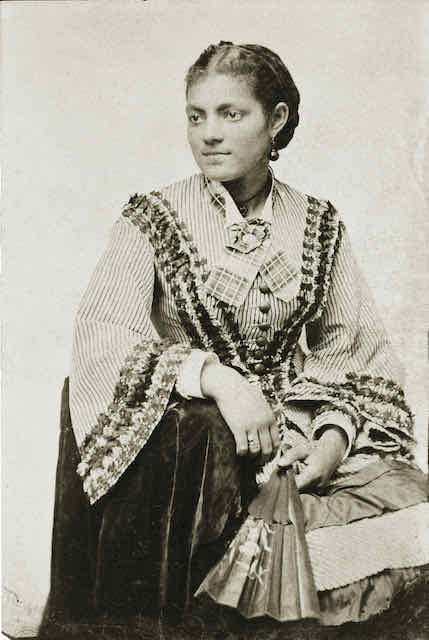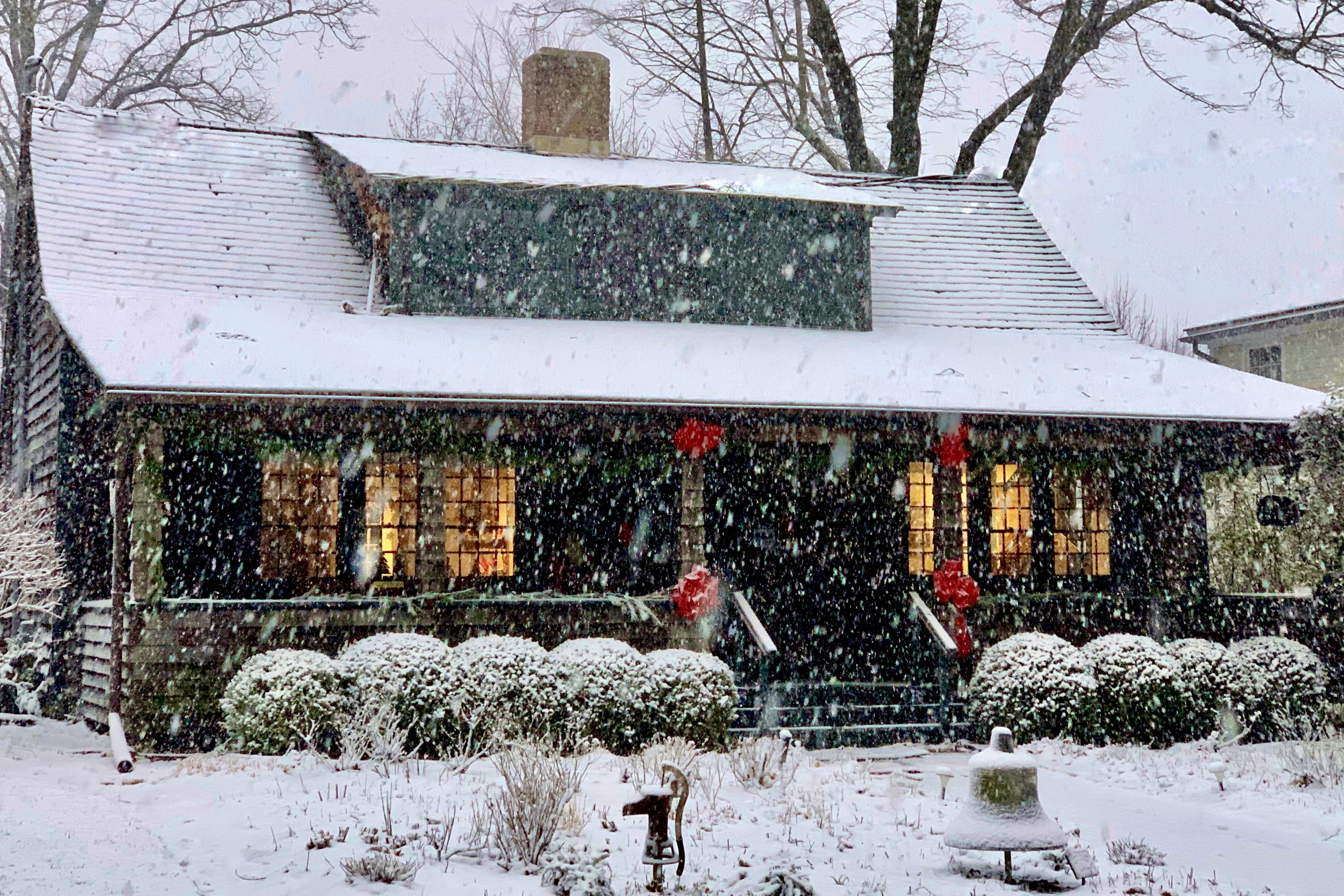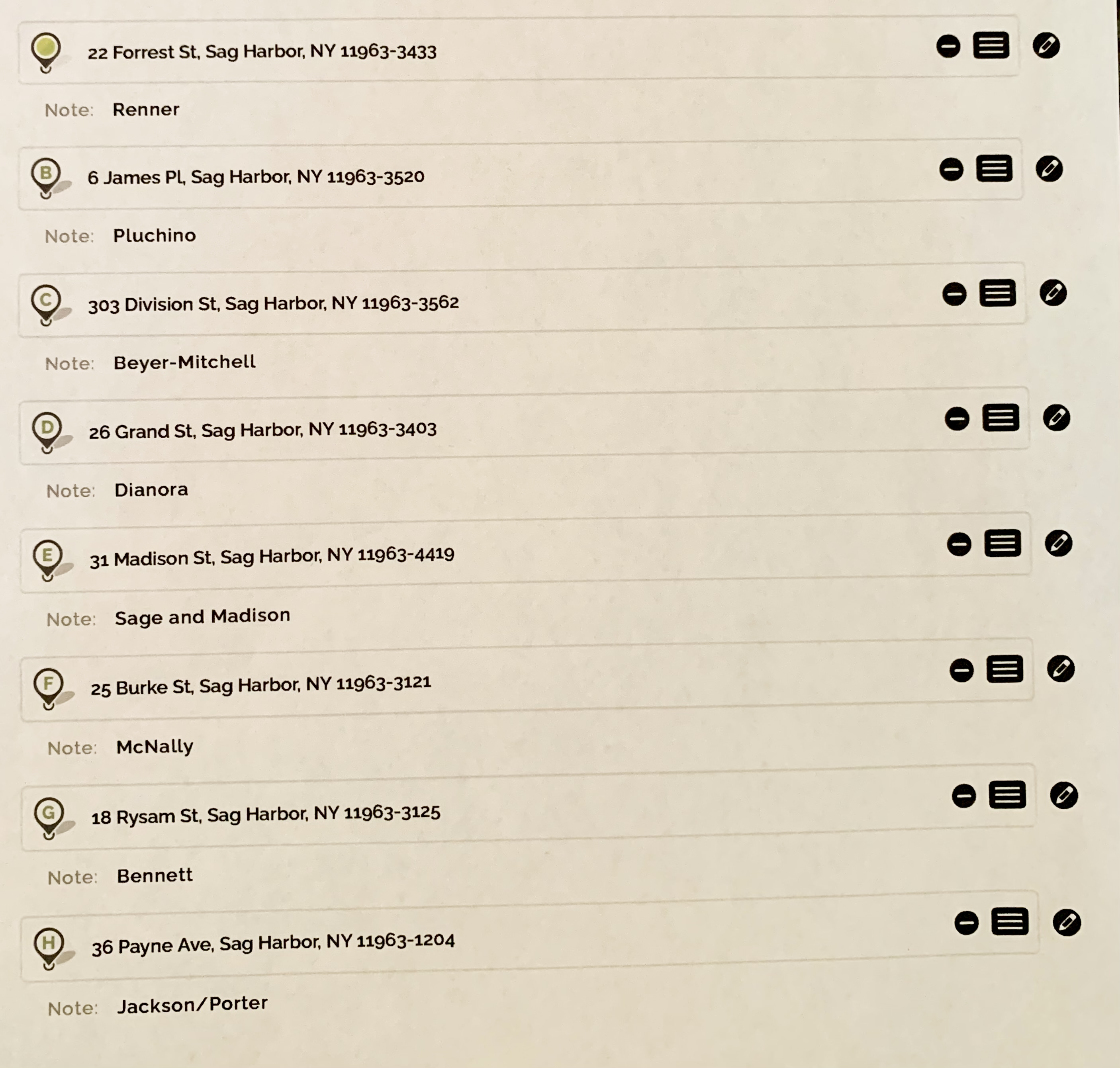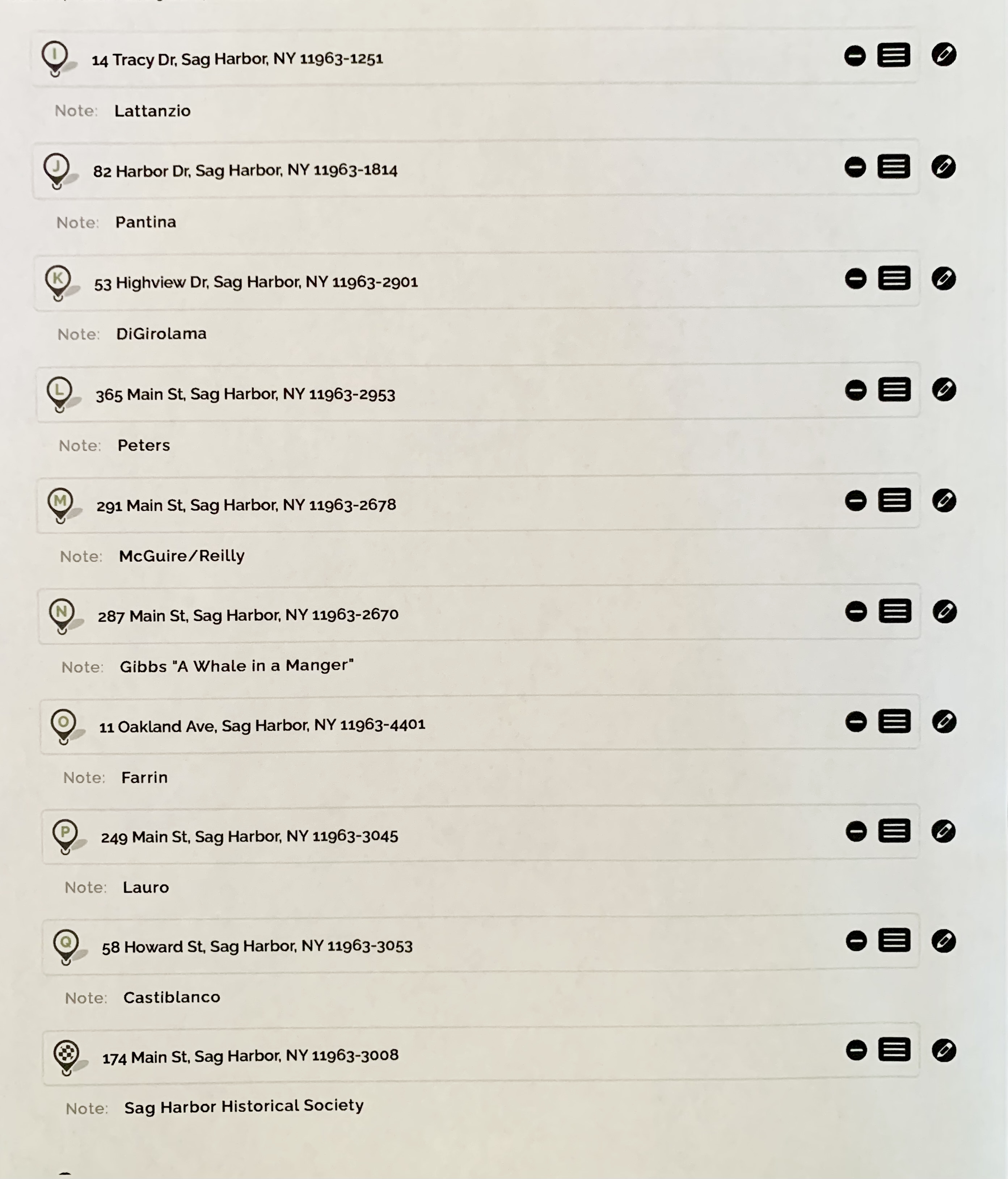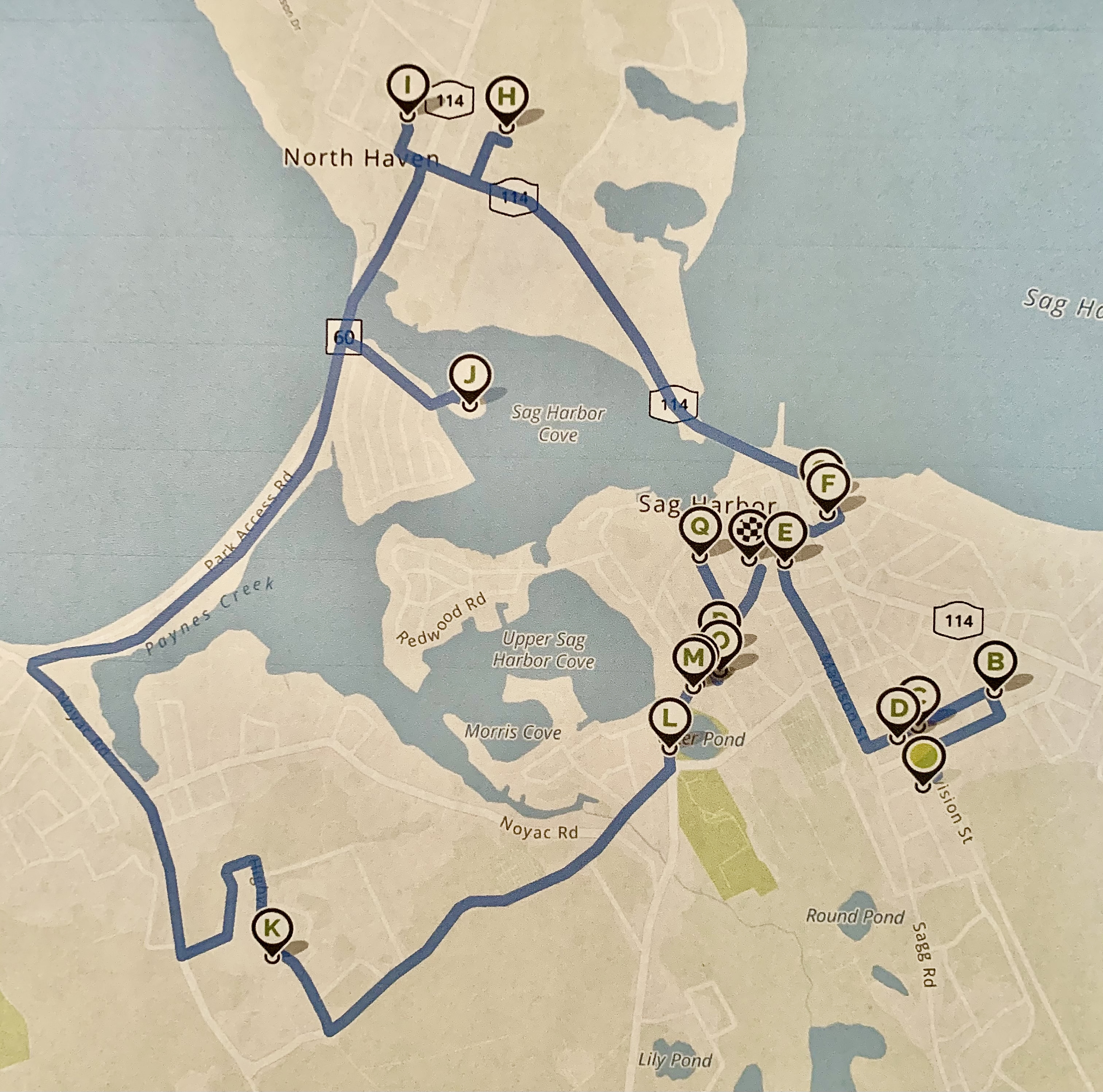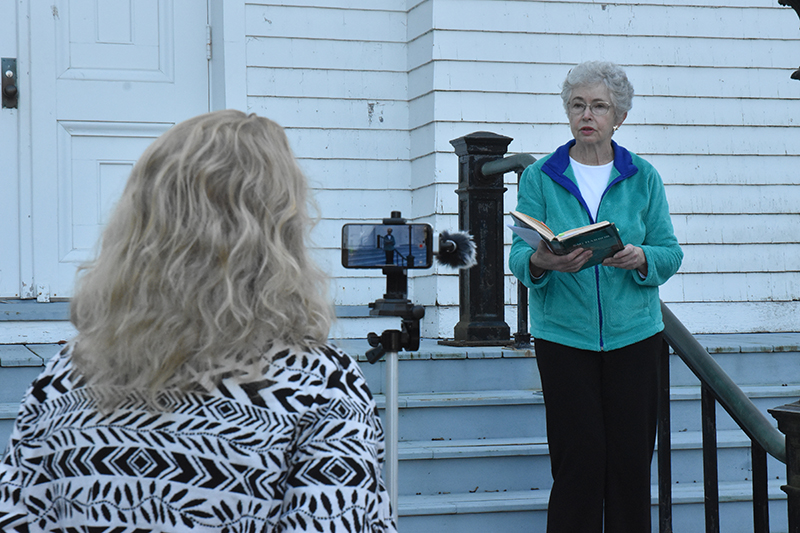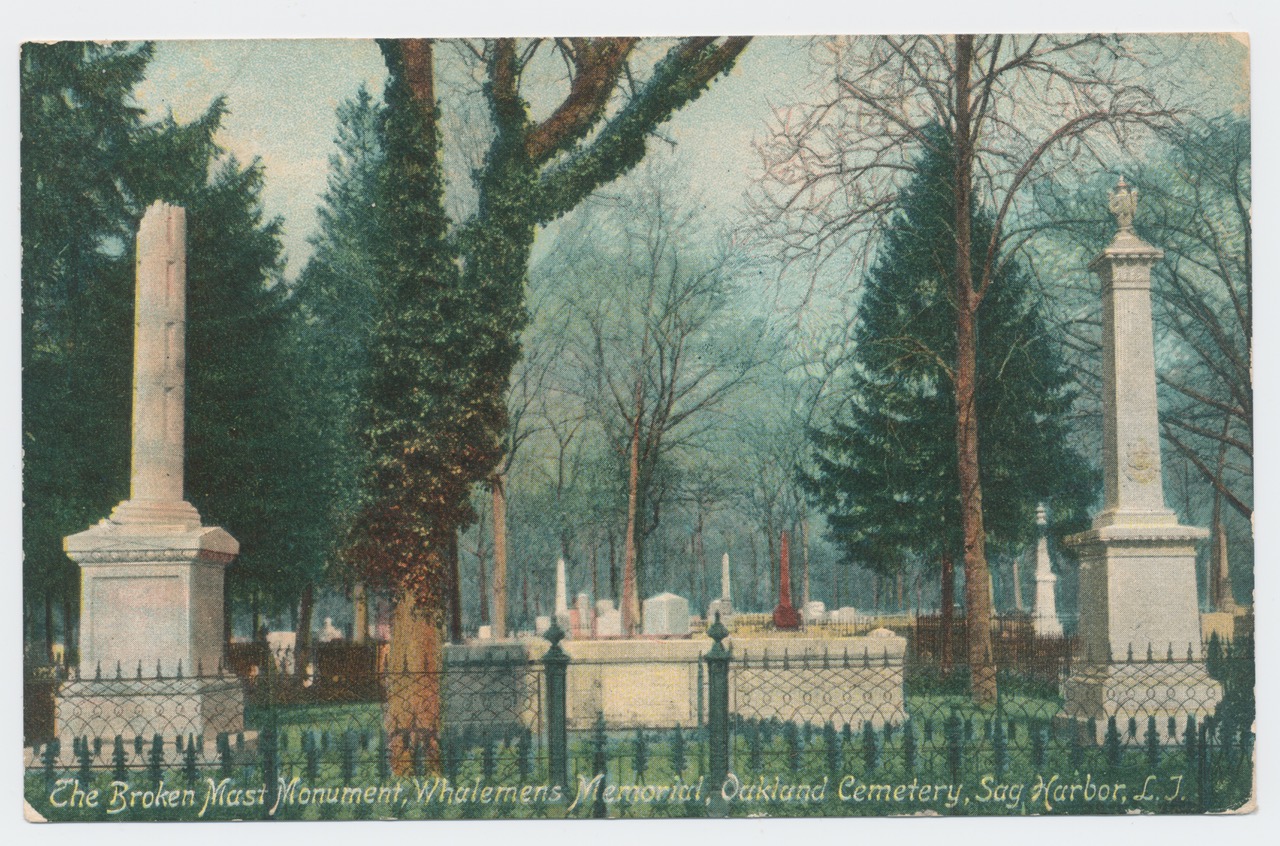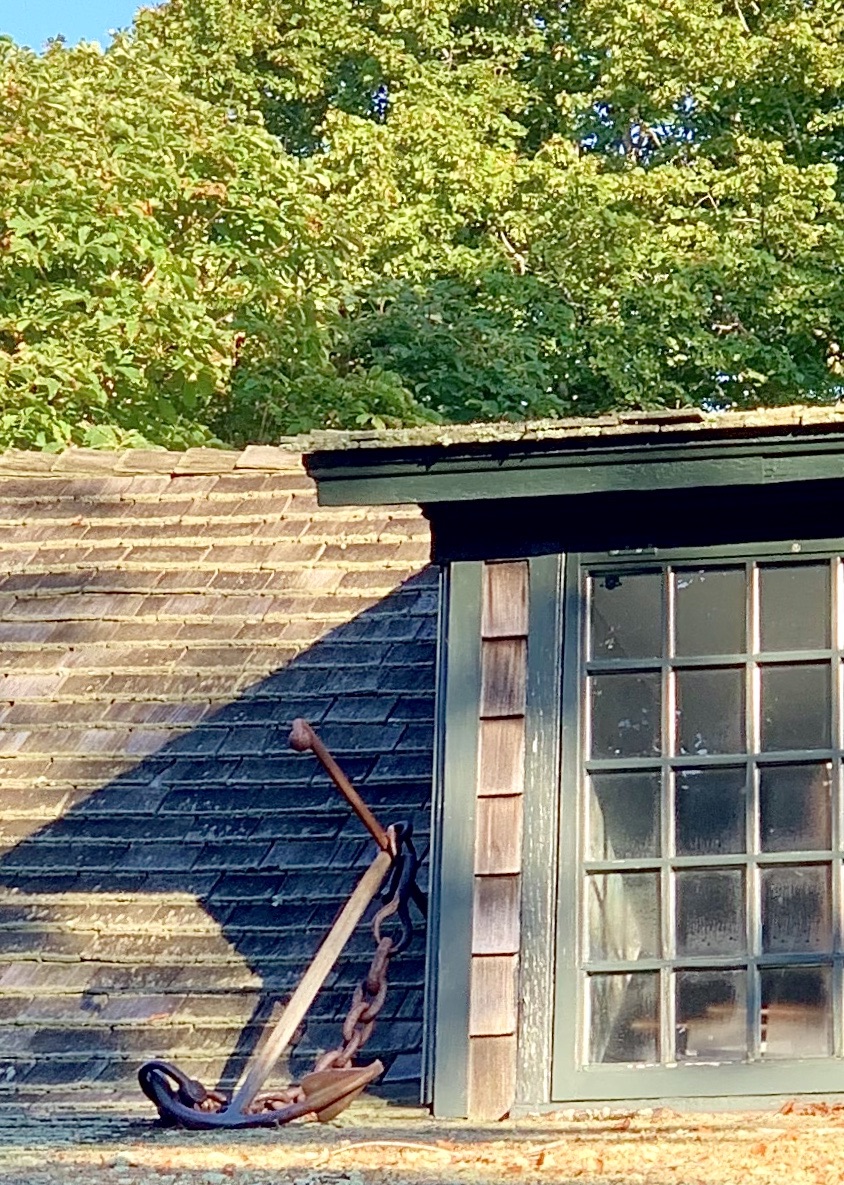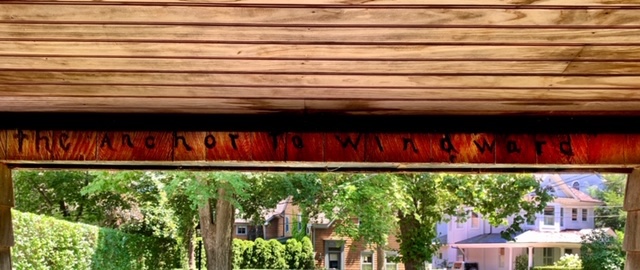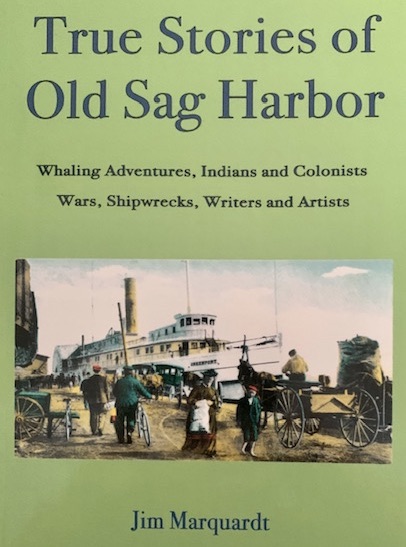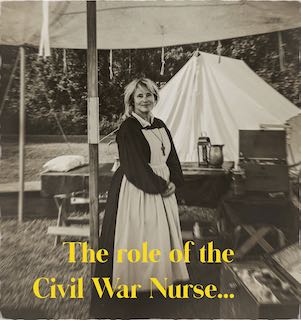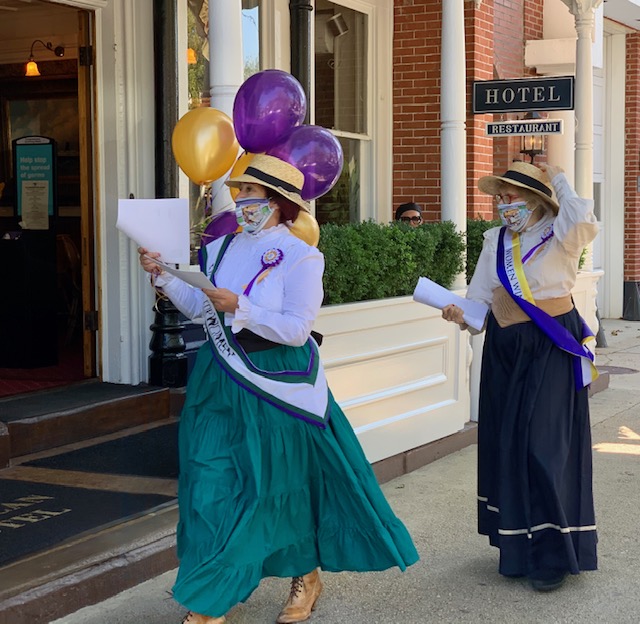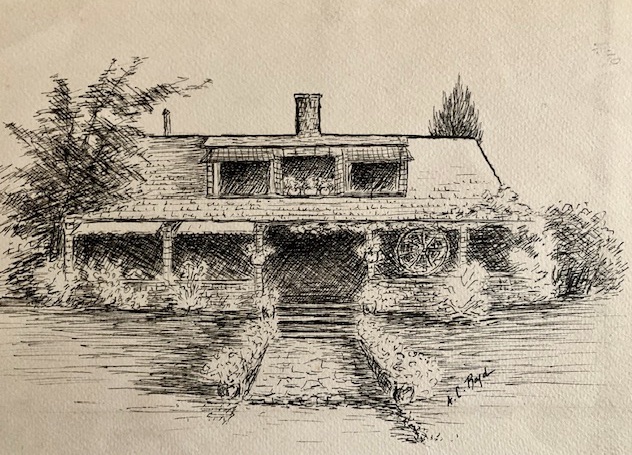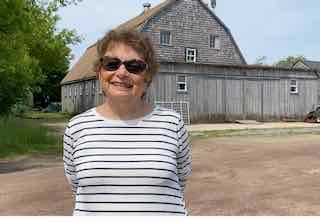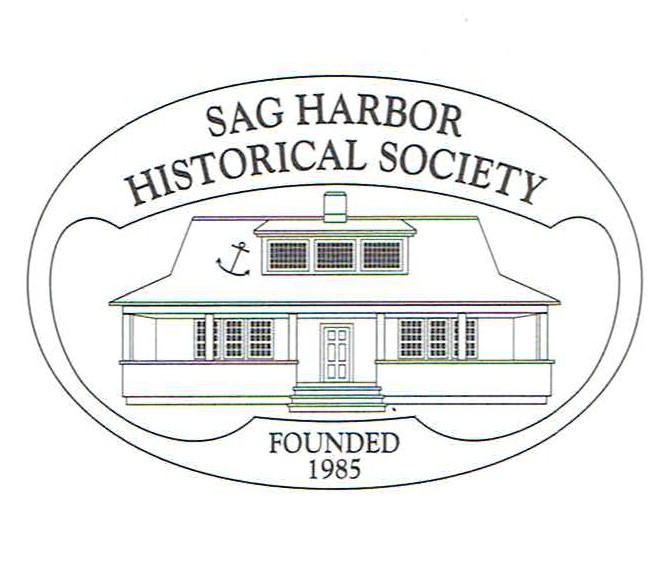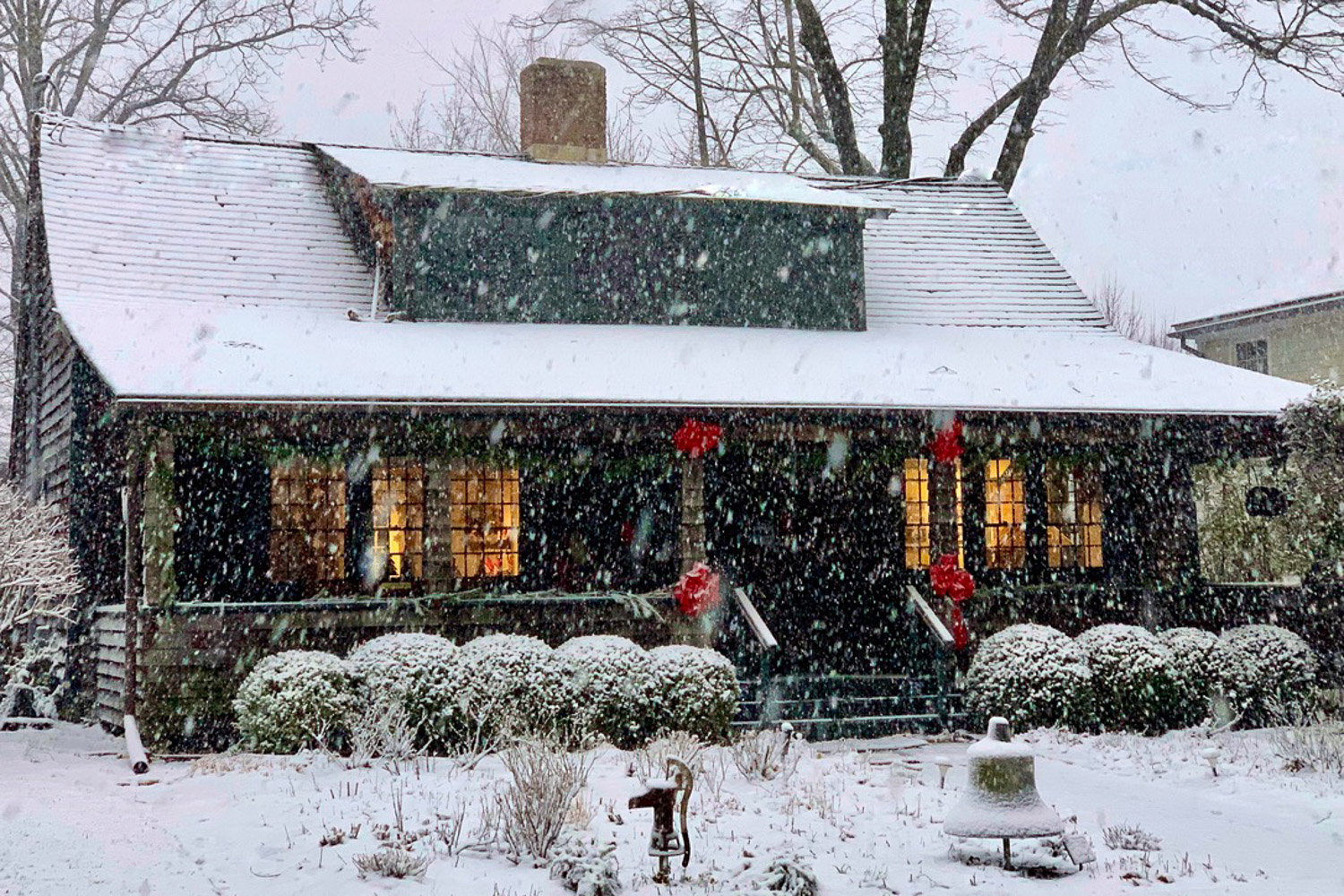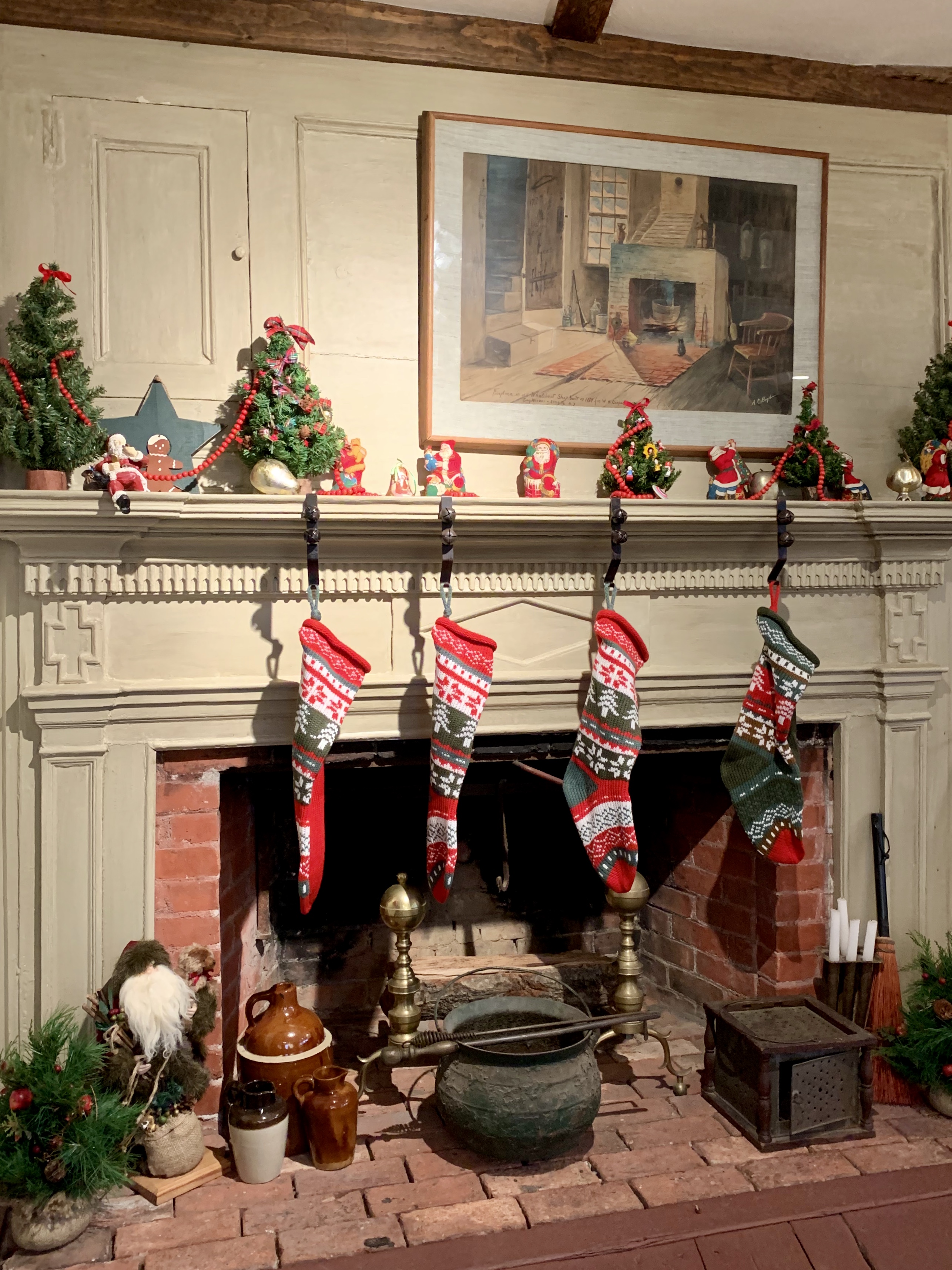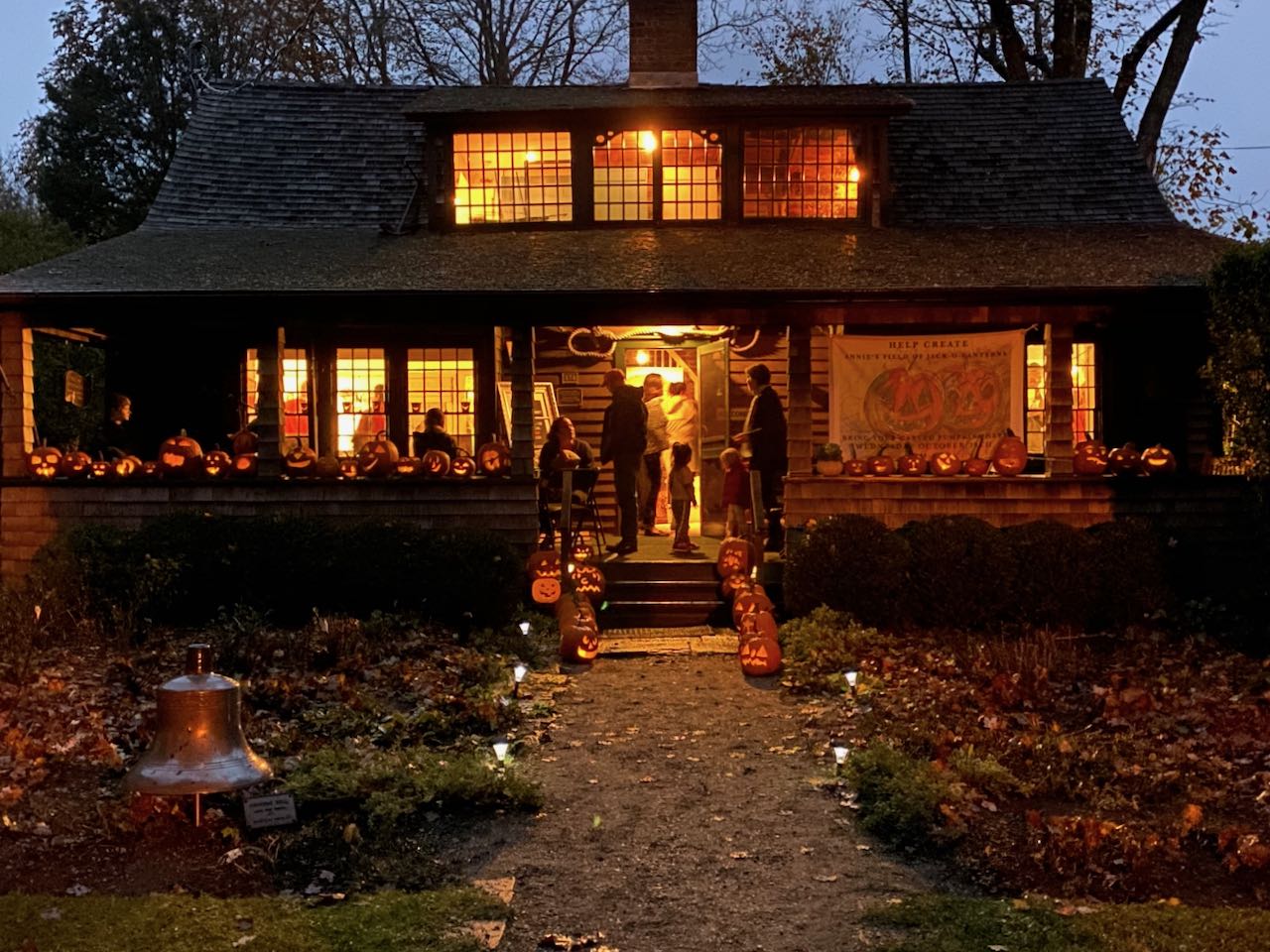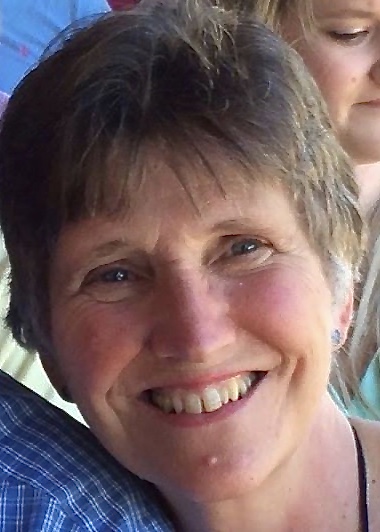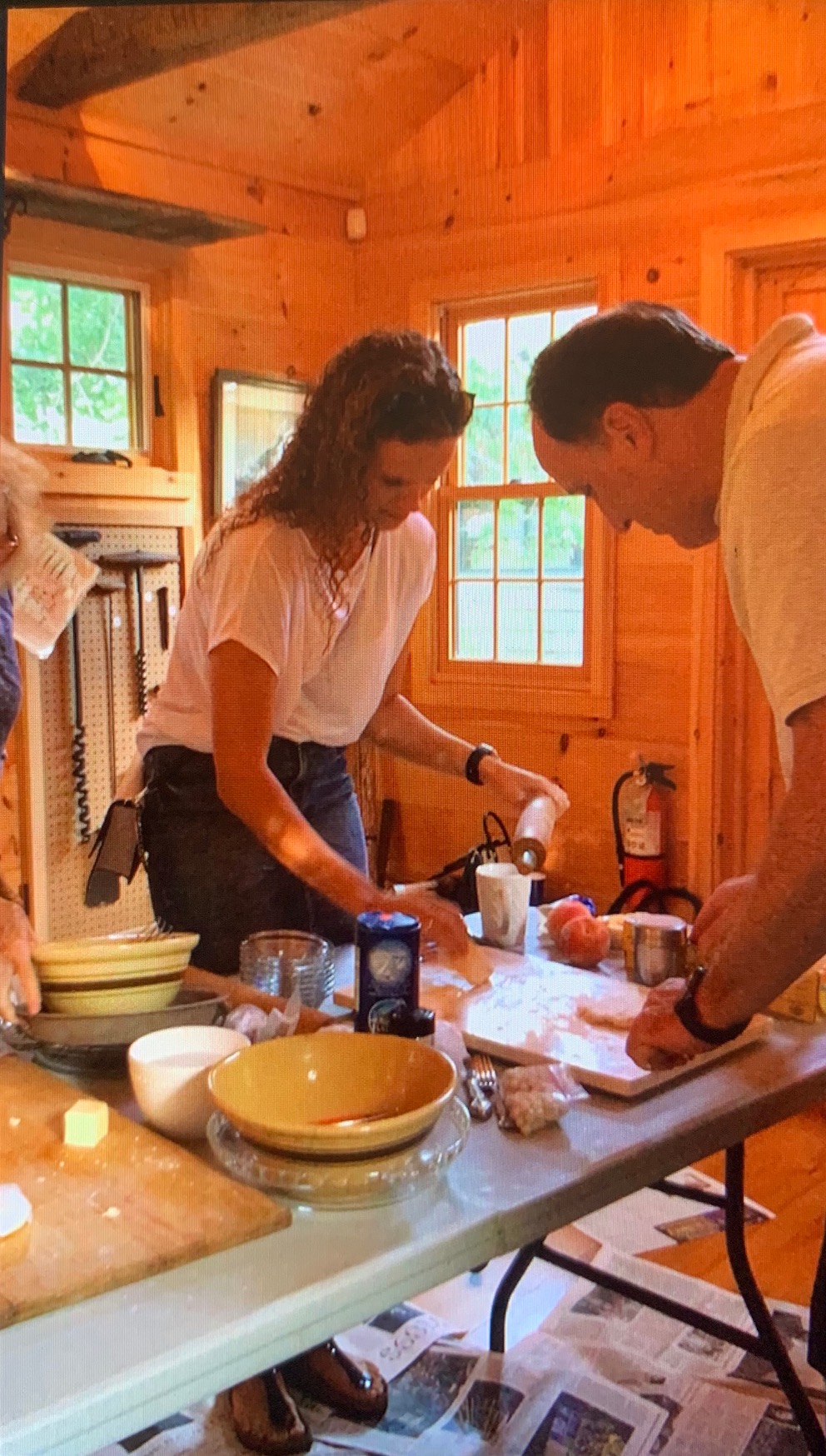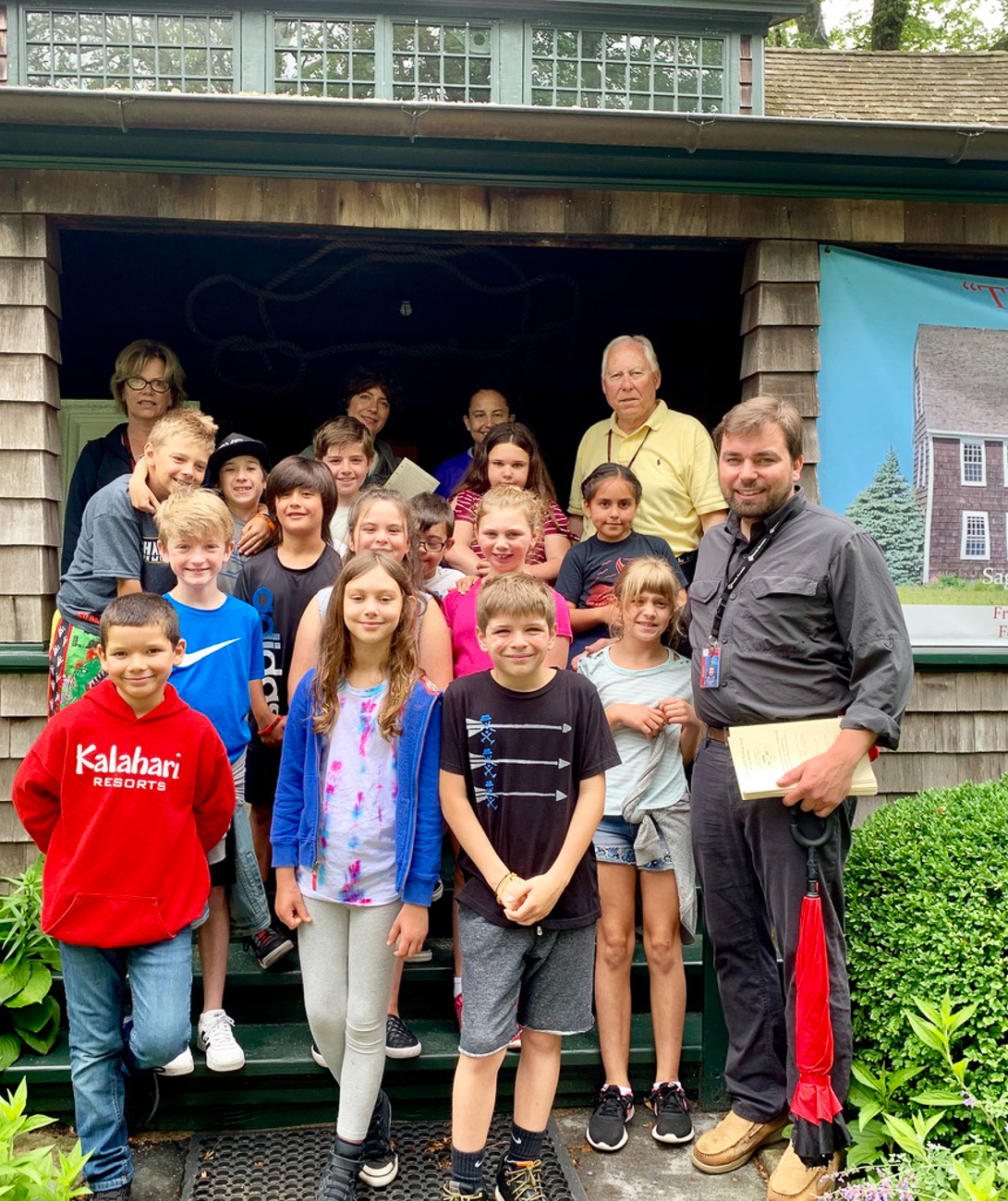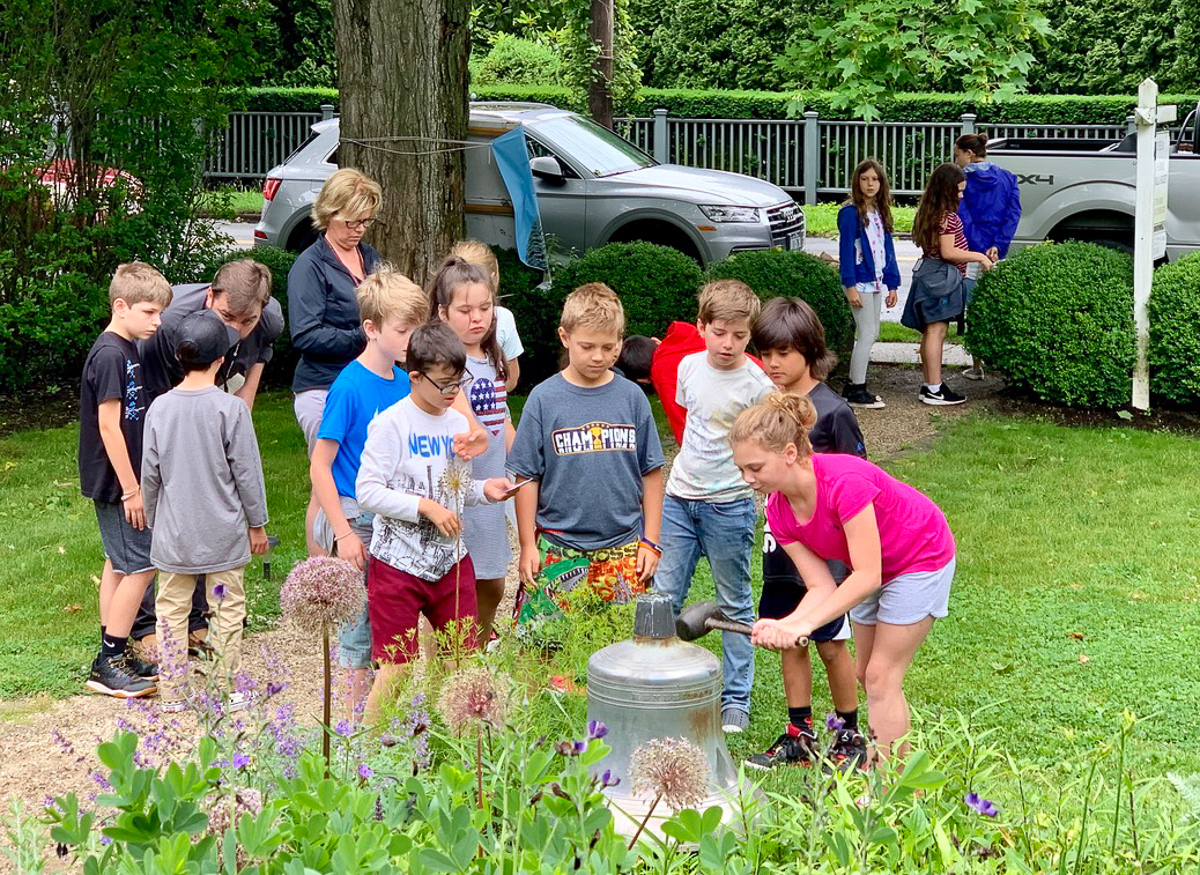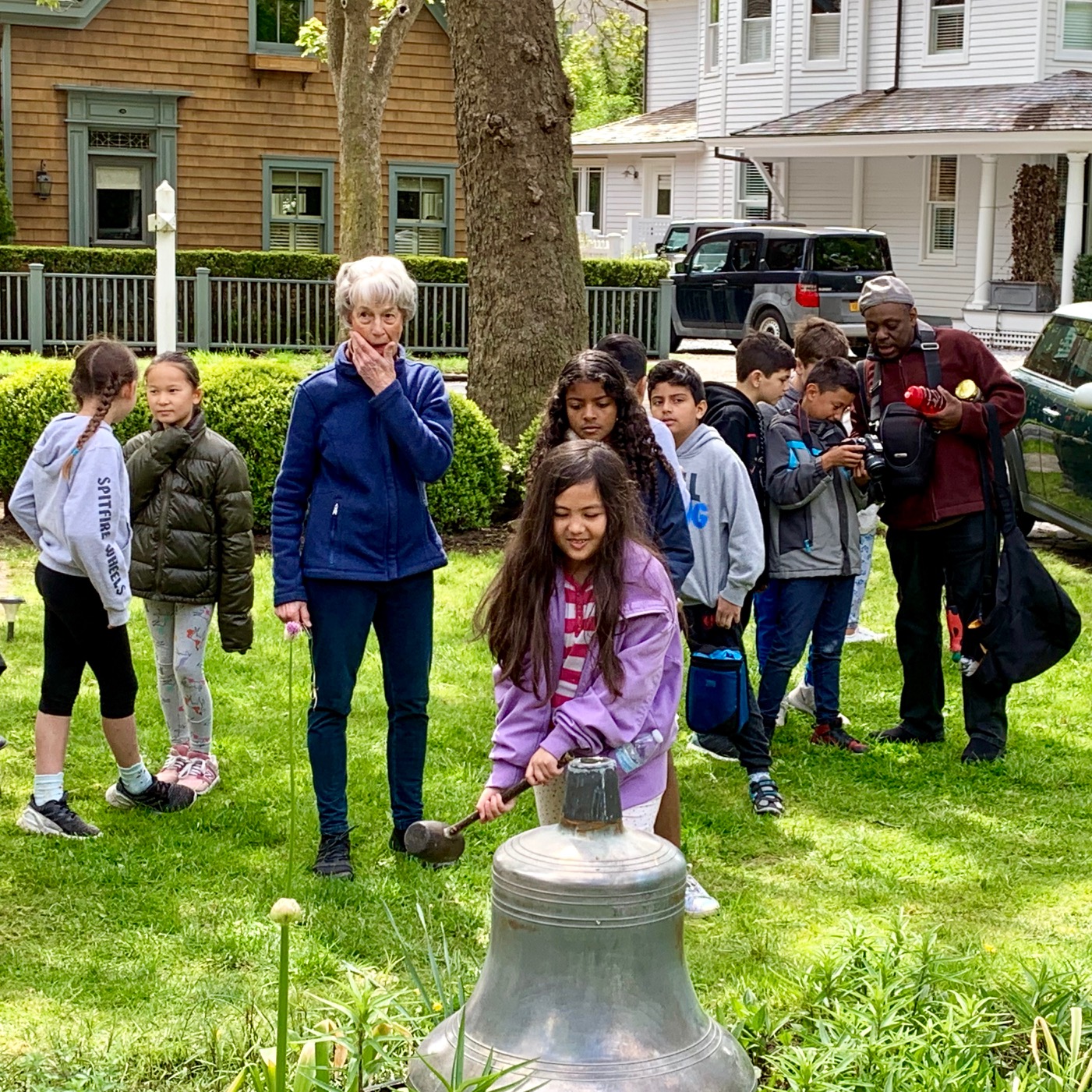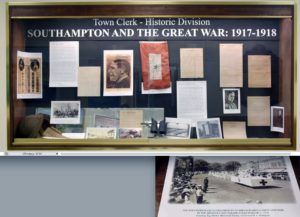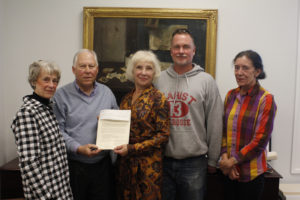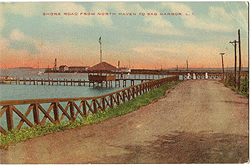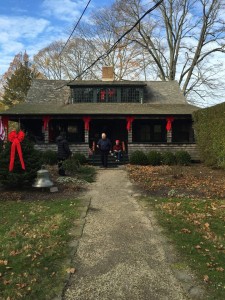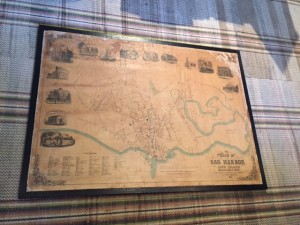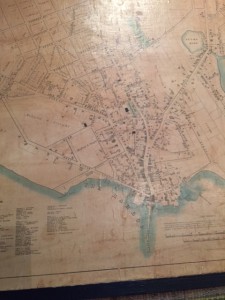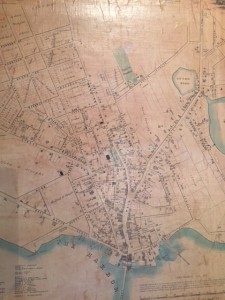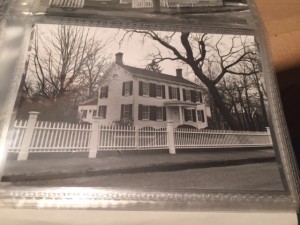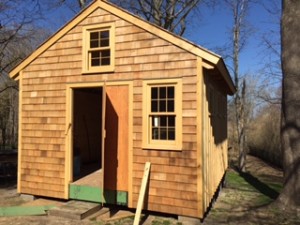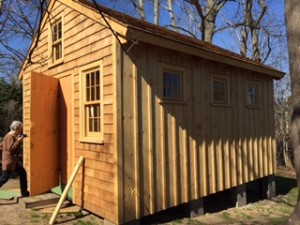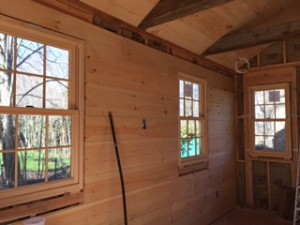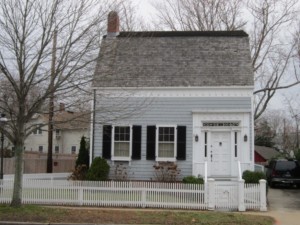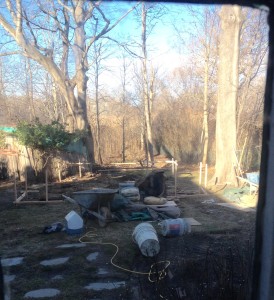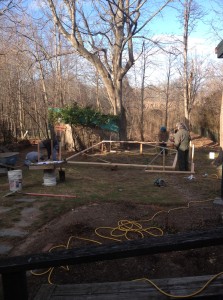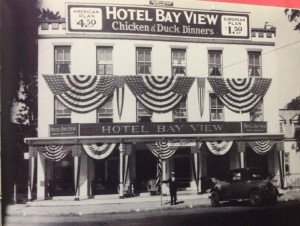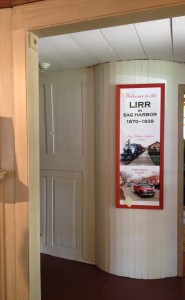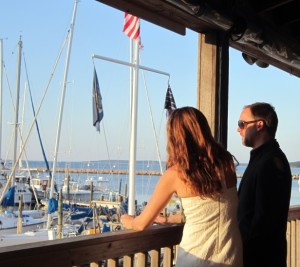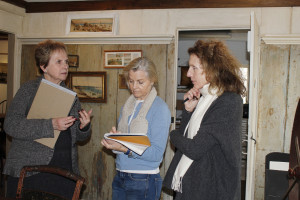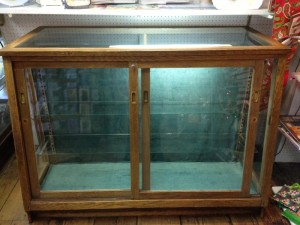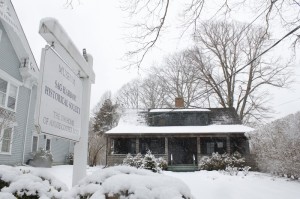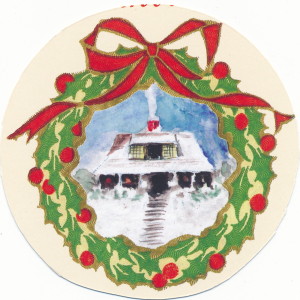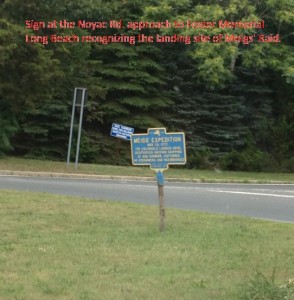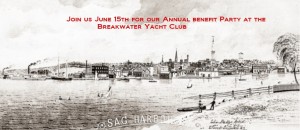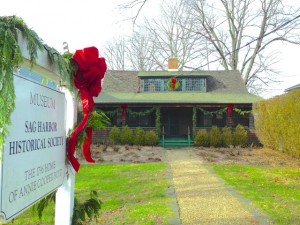Dorothy Ingersoll Zaykowski - A True Sag Harbor Treasure
It is great sadness that we have learned of the passing of Dorothy Ingersoll Zaykowski. Dorothy was an incredible benefactress to the museum for many, many years, working tirelessly to help the museum in its efforts to preserve and share Sag Harbor's history.
Dorothy has been described as "a town native whose own life embodies so much of the spirit of determination and hard work." She was a fourth generation Sag Harborite, the daughter of a teacher, the librarian in the history room in the John Jermain Memorial Libary in Sag Harbor, a wife, and a mother of three children.
Sparked by her column in the local weekly newspaper, her research evolved over a ten-year period into an account of life in a small town ... how its people join forces to confront adversity and rebuild time and again. This became Dorothy's first book Sag Harbor The Story of an American Beauty Dorothy also, along with the members of the Committee for the Old Burying Ground, compiled all of the material that created the book The Old Burying Ground at Sag Harbor Long Island New York.
Dorothy's loss is a loss for us all, and we send our deepest condolences to her family.
Sunday on the Porch: The History of Canio's
Maryann Calendrille and Kathryn Szoka will shard the colorful history of this unique bookstore. Canio’s Books has been a literary gathering place for all in Sag Harbor for 44 years. Established by Canio Pavone in 1980, Calendrille and Szoka took over the "perfect bookstore" in 1999. This is not just a bookstore, they have readings, art receptions, photography and writing workshops, and Canio's Cultural Cafe hosts lectures, seminars and other public forums. The ladies explained the Moby-Dick Marathon and more.
For those who could not attend and who would like to read the complete transcript of this Sunday on our Porch, read below:
Canio’s Sunday on the Porch August 18, 2024
Maryann Calendrille & Kathryn Szoka
They read an essay by Carol Williams, from thier book: Sag Harbor Is: A Literary Celebration (2006) publisher James Monaco, a collection of essays about the village. Williams mapped Sag Harbor.
“Finally, I transferred every curve and intricacy into a final mylar, it was as if I had traced a spider web, as perfect and as alive.” “And like a fly in a spider’s web, many get stuck here, they think it’s the quaint houses, or the harbor, or the convenient distance to the city, and maybe it is all that too, but beneath and beyond any part of the village, it has to be the web - the mesmerizing pattern of our streets, our three broad streets become roads that link us beyond village boundaries and through the woods to the ocean and a larger town with more movies. Slung between those branches are the labyrinthian side streets and alleyways that diverge to wrap around ponds, coves, schools and graveyards, and everything converges at last, in the single curving Main Street, which inevitably connects us to each other, which in turn funnels onto Long Wharf that leads straight out to sea and vast expanses of sky. With such a map, every errand is an adventure, every encounter a potentially changed life.” This expresses our feelings about the village.
They are actively in conversations about a new location, but they intend to stay in this web.
Writers started seeding the village in the early1930s. We have had a writer’s village for almost a century, which is much longer than our whaling history here in Sag Harbor. Who might those writers be. First mentioned: Wilfrid Sheed, whose wife Miriam Ungerer was a cookbook writer. Sheed is well known for coining the term – “You couldn’t stand on Sag Harbor’s Main Street and throw a pencil and not hit a writer”.
One of the people who encouraged writers to come was Canio Pavone, who started Canio’s Books in 1980, which became a literary hub for those ex-pat writers who would come out here in the relative unknown of Sag Harbor at that time to ply their craft, but then on Saturday nights they would come to the book store to attend readings or they might actually come Saturday morning and have a coffee with Canio. One of the first persons to do that was Nelson Algren who lived around the block from the bookstore. As Canio was painting shelves and bringing in books, Nelson stumbled in in his bathrobe and said I have more books in my bathroom than you have in this bookstore. Later in the day, he walked back with a grocery bag of books to donate to the store, and Nelson and Canio became good friends. Nelson was often there on Saturday mornings talking with Canio. He gave the first ever reading at the bookstore in 1981 two weeks after he was indoctrinated into the American Academy of Arts & Letters. The place was mobbed, it made the New York Times, and at that time, Canio’s Books was on the map. Nelson characteristically charged everyone $3.00 but then he took everyone out for pizza.
We’ve had the honor and pleasure of shepherding and stewarding that bookshop that Canio, lovingly founded, and he would have loved to have been here with you today, but he has a big family reunion. He’s sorry he couldn’t be here, but he’s so dedicated to the shop, he continues to come and take a half day at the store once a week even though he lives quite a distance away now. His great generosity and encouragement meant so much to us when we took over, and that continues to this day.
We’ve had many well celebrated writers through the bookstore doors: Kurt Vonnegut, Studs Terkel, Margaret Atwood, Betty Friedan (living around the corner), James Salter, and Peter Matthiessen. Colson Whitehead has read at our shop from practically his first book, not actually the first book – his Sag Harbor novel was the first reading he gave at the store. One of our great pleasures has been to watch his career develop and him receiving all the awards that he really deserves. Other writers we’ve had: Carl Safina, the great ecologist known throughout the world.
But it’s not really just the celebrity folks and the big names. For me (Maryann): Having the privilege to connect people with books that will interest them, will stir their curiosity or affirm something about themselves is just my (Maryann) great, great privilege for these 25 years. As Kathryn mentioned, we’re both educators, I was teaching English – continuing that, we have writing workshops, Kathryn teaches photography workshops. We’ve had some great events but it’s the everyday connections. We hope to be able to continue to provide a place for community gathering and for those connections to happen because I think they feed everyone.
Some local folks we wanted to mention, to bring them into the circle because we think many of you will remember them, some wonderful women who have been tremendously supportive of us and sadly now are gone. Berty Holabird, Dolores Zebrowski, Pamela Rossbach, Alexandra Leigh-Hunt, Rita Solo, these are tremendously talented, gifted, intelligent women who each, in their own way, came and introduced themselves to see, became champions of us and have continued to be guiding lights. Maybe one day, we’ll write a book and detail a little bit more, but to just give you a little sense of how that place really represents so many of the people – important people of the community.
Kathryn: I want to mention one other woman – Betty Ann Savage. A fun anecdote about her, we occasionally would be in the Old Whalers Parade on Labor Day weekend or after, and one year we outfitted my truck to be Rocinante from Travels with Charlie, this was well before the Steinbeck house was on the market. We had Herman Melville in the back in the bed of the truck, and we had John Steinbeck in a fishing mac, with a pole and hook, and who wanted to ride shotgun in the truck with me, but Betty Ann Savage. If anyone knew Betty Ann it would be kind of the last thing, I would have expected her to do. She was thrilled.
Bill Mulvihill – the Mulvihill’s have a longstanding place in our community here, I think his parents had a place here on Glover Street. They have donated, between Doloris and Bill, so many acres of land to the town – the great swamp (if anyone has gone there on a hike, I highly suggest it). Both Bill and Doloris just loved Sag Harbor, and Bill wrote the book, he wrote many books, the one that was made into a movie was The Sands of Kalahari. He also wrote South Fork Place Names. He dedicated himself to understanding what all the names of the streets, and the towns and communities around here were like, and South Fork Place Names is a wonderful contribution to the history of Sag Harbor. He would often come into the store, and we would chat, late Friday afternoons.
Kathryn: Maryann mentioned Studs Terkel. The first year that we were in ownership of the bookstore, that would be 1999, … it’s a Saturday morning and in through the door comes Joe Pintauro, a playwright and writer, and with Joe is an older gentleman. He’s saying Kathryn, I want to introduce you to someone and I’m thinking this must be his father. He says, Kathryn this is Studs Terkel, and then Studs took off on a soliloquy in the bookstore, where there were two or three other people, who all stopped and turned to listen to him because Studs and Nelson Algren were very close buddies. They were at the Chicago Writers School. Studs knew that Nelson had given a talk at Canio’s and that we have what we call the Nelson Algren chair. Joe Pintauro is also part of that Chicago School. It was a magical, in person moment, where Studs took over. The people in the store, after he left, said I can’t believe that was Studs Terkel. They were so thrilled.
Maryann: I’ll tell you the little moment of Kurt Vonnegut. He didn’t actually read at the bookshop but years back he read elsewhere at the college, and Guild Hall, etc. One day, he sauntered into the bookshop, Saturday I guess it was, and was looking around, and I tried not to get too starstruck and be cool. Of course, I recognized him, he’s a certain figure you will notice. He comes to the desk with some books and hands me a credit card and says, “I’m a writer”. He slides me the card and says, “Do you take credit cards in this draconian institution?” I said, “Yes we do.” He said “Great, great, do you sell cigarettes?” I said “No, I’m sorry we don’t.” He said, “Darn, then you would have been the perfect bookstore.” He was very warm, charming, and humble.
We had a very unusual request of a customer. He wanted to buy, as a gift, for his wife, who was a writer, the complete OED (Oxford English Dictionary). The complete OED is, how many volumes? Something like 22-23 volumes. What we usually see in college libraries is the condensed version – 2 volumes and you need a magnifying glass to read it. This was a very special couple, and the wife was a novelist, very well known. He wanted the entire set, 20-some-odd volumes. These are giant books, and we had to bring them to Shelter Island, deliver them to their home, without her knowing. … and she was in the house at the time. Each volume is like 4-inches thick and 12-inches high. There was this ruse that her husband built up about how we were going to be going out for a drink, so he was giving us instructions about how we needed to drive around to the back of the household, and he opened the garage and, you know, it takes a while to unload 22 volumes of the OED. Fortunately, she was in a room writing and was not at all aware of what was going on and the gift was a big surprise.
In terms of delivering books, during the Pandemic, which was one of the intense periods that we all lived through. Of course, the store was closed and we could only have one person in the store at one time to process orders. We delivered books all around Sag Harbor and getting back to the Carol Williams essay, it was just really wonderful to be able to drive down some of these long, winding, flag lot roads to see where people lived and it was another way to get a sense of this place, getting back to the people and the place, and what Sag Harbor is really about. There is just such a diversity not just in the landscapes but the home-scapes within Sag Harbor, from the great old Whaling Captains’ homes to very modest cottages that people live in. That was wonderful. We discovered little neighborhoods we never knew about tucked in here and there in the village. It was a special time.
Speaking of houses, let’s talk about Steinbeck House. We’ve been endeavoring to do what we love best at Canio’s which is bring the community out to the people but also bring people into the store to engage in a community that is substantive and meaningful. One of the things that we are most proud of is the fact that we sort of spearheaded the drive to preserve John Steinbeck’s home. As we all know, it’s now been preserved and we are in our second year of having it as an active writer’s retreat; it is also open to the public for free visitation alternate Saturdays throughout the year, and this coming Labor Day weekend, you can actually get into the house. A great success. It was a two-year battle. Everyone said, “it will never happen” and it did.
There are so many writers that we’ve met over the course of our time there. At one point, we put together a list of the writers that were in and around Sag Harbor and there were over 150 and we probably left out over half of them. It was really impressive. So we’ve met a lot of writers and had intimate and interesting conversations with many of them, but there’s one writer, actually of a couple, who we really kind of were very involved in the process of the writing of the book. By that I don’t mean we edited it, or we actually did anything in terms of putting words into this person’s mouth, but we were observers in close proximity, and that’s Lucette Lagnado, who wrote The Man in the Shark Skin Suit. It was her memoire, and it was her first book. Her husband Doug Feiden, who was also a writer and journalist, wrote for the Sag Harbor Express when he lived out here for several years. They’re both wonderful people and sadly both deceased now but we were really able to have an intimate look at that whole process. It was a real highlight to our experience to meet these two truly extraordinary individuals and to develop a friendship with each of them and to have wonderful conversations and really, from a distance, but closely observe all of the effort and the struggle that goes into putting a very important book together as Lucette’s memoire is. We do count the two of them as guiding lights continuing.
We should mention just a couple of other highlights. We already mentioned the Sag Harbor Literary Collection we were able to put together with Jim Monaco. There are other community projects that seem to really represent what’s important to us. The bookshop is about connecting people with books but it’s a lot about community.
Before we cover more on that, in terms of another writer that we have become friends with over the course of time, we mentioned Carl Safina. The reason I bring his name back in the conversation is not that he’s giving a talk later this month, though you should make a note of that. It’s because the book that he’s going to be talking about is Alfie, about the owl he rescued and then resuscitated, let out into the wild, and Alfie lives in his back porch essentially for lack of a better way of putting it. We happened to meet Alfie when he first came into his life. Don’t tell the National Wildlife Association. We happened to be over at his house and he had this beautiful little screech owl and everyone there was just oohing and ahhing over Alfie.
Eric Cohen from the John Jermain Library. He had a vision, about a dozen years ago, of forming the Sag Harbor Cultural District and what we would do is bring together all the non-profit, cultural organizations to be able to plan together, to have more synchronicity among our organizations. So, Canio’s Cultural Café, which is a not-for-profit that we started back in 2009, is an educational non-profit and underwrites all the programming that we do at the store. We were a charter member of the Cultural District and for at least five years, the Cultural District worked really well. The pandemic coincided with Eric’s retirement, and it has not yet really resurrected itself. I’m going to put a plug in for the Cultural District to really come back because I think we did a lot of good work together. I think now as Sag Harbor continues to round yet another corner in terms of the direction that we are going, we can’t do enough to promote the cultural aspects of the village we have.
Moby Dick Marathon: Canio’s started the Moby Dick Marathon in 1983. We claim, as Canio’s Books, the first institution to do a marathon reading of Moby Dick. Before the New Bedford Whaling Museum, and before Mystic Seaport. When Canio did it, he did it around the clock, so if were a diehard, you were there for the 36 hours that it took. When we brought it back, we decided we wanted to expand it out because a lot of people would come in the store and say one of two things: you have to bring back the Moby Dick Marathon or God, I could never get through that book. As teachers, we wanted to make literature accessible to people who may not have gotten a degree in English, so by expanding it, by having it over three days, we get hundreds of people to come. People say, wow I never knew there was so much humor in Moby Dick, or I never knew the language was so ethereal and elegant. That really, as a teacher, is a wonderful thing to hear. We do the Moby Dick event every two years as it’s a huge undertaking. Kathryn is the master mind about scheduling, and she finds 10 minute slots of reading time for 160+ readers, it’s amazing. We do it every two years, we did it in 2023, so that means 2025. Wherever we are in June 2025, we will be hosting the marathon and it will circulate around different locations in the village. [Nancy Achenbach offered the ACB House as a location.]
Audience: The Canio’s Building was once a dry goods store with residential space upstairs. The center part of the interior of the shop dates from the 1770s. Front portion was added on about 100 years later. In 1930s, there was a riding stable there. After WWII, became an electronics repair shop. It became Canio’s 44 years ago in 1980.
.
Sunday on the Porch: "The LIfe of a 19th Century woman told through the Clothing of the Period"
Mary Jane Marcasiano, SHHM Trustee and costume designer, and Alex McNear, writer and editor, teamed up this year to create our unique exhibit about "The Life of a 19th Century Sag Harbor woman told through the Clothing of the Period and her Writings" and specifically Annie Cooper Boyd.
Annie Cooper Boyd was a life-long resident of Sag Harbor, an artist, and a prolific diarist throughout her life. Raised in the house next door, Annie raised her family in this sweet cottage, now known locally as the Annie Cooper Boyd House and the headquarters of the Sag Harbor Historical Museum.
Sunday afternoon, July 14th, Marcasiano and McNear shared with us their journey and the choices they made to create an exhibit that reveals not only Annie but what a woman's life was like on the East End between 1882 and 1907, through Annie's clothing, her writings, and her art.
CLICK HERE to see a video of this Sunday on the Porch.
Jean Held A Sag Harbor Gem
Jean Held - A Sag Harbor Gem
It is with great sadness that we share with you the news of Jean's passing; she was 87 years old. When thinking of Jean so many adjectives come to mind: history lover, naturalist, photographer, conservationist, bird-watcher, beachcomber, graphic designer, author, editor, publisher, researcher, former trustee, bicyclist, tangential conversationalist and a woman with insatiable curiosity about nearly every topic.
We are so fortunate that the Sag Harbor Historical Museum, formerly known as "the Society", has been Jean's second home for decades. Her contributions are too numerous to relate here but the creation, design and editing of the monthly hardcopy Museum newsletter - "The Sentinel" - for years was a labor of love which benefitted us all. Jean was also the creator and curator for numerous exhibits at the Museum, the most popular of which were about the Long Island Railroad hub that came into Sag Harbor, Long Beach, Trout Pond, and Long Wharf. When the dredging began in the harbor during the "rebuild" of Long Wharf a few years ago, not another human being in Sag Harbor was as excited to see what our waters would reveal as Jean was. The dredged material was deposited at Havens Beach, and there for the next two years you could find Jean, no matter the weather, "beachcombing" for historic treasures and any materials that would inform her about some of Sag Harbor's past.Much of what she retrieved from the "debris" were broken pieces of glass, china and pottery which few would find of great interest, but Jean did. This was just the beginning of a quest to get answers. She was determined, tenacious, and seemingly never discouraged which resulted in her proving that three of the fragments of a pottery vessel, known as sherds, in fact, were from stoneware created by the first African-American potter, Thomas Commeraw. "Eureka!" She was thrilled at this discovery and then created an exhibit that shared her findings not just from the late 18th and early 19th centuries but throughout the generations that have lived and worked in Sag Harbor. Jean was a true gem, who added so much to our village, museum and lives. She stopped by the office a little while ago and she was chatting as always about a number of things. She was gently reminded that she was taking tangents to which she replied "I love tangents, don't you?" So very Jean. She is sorely missed and will be for years to come.
If you are interested in reading more about Jean click HERE for a link to an article written in 2022 by Nancy Remkus for the Express News Group entitled "Jean Held Exploring the Mysteries of Home".
SHHM has dedicated a bench in Jean's memory which now graces out front lawn. Visitors have been seen relaxing in the shade enjoying our historic house and Jean's beloved village at large. Please click here to see a video citing our dedication to Jean.
Video of SHHS Preservation Forum December 3rd 2022
Here is a link to the hour and twenty five minute video of the entire Preservation Forum.
The recent Preservation Forum was a resounding success. Over 60 people attended SHHS's second Preservation Forum held Saturday December 3rd at Christ Episcopal Church, and everyone agrees it was much needed and a great success.
Nancy Achenbach, President of SHHS kicked off the forum with opening remarks at 1:00 p.m. and then Randolph Croxton began moderating the event. The panel consisted of four (4) chairpersons of the Village Boards: Will Sharp, Harbor Committee; John Shaka, Planning Board; Jeanne Kane, Zoning Board of Appeals; and, Steve Williams, Historic Preservation & Architectural Review Board.
The goal of the forum was to share the village's preservation oversight process, to increase transparancy, and to "de-mystify" the day-to-day practical details required for the successful managment of preserving history. Questions for the panel were submitted before the event as well as on the way in to the event.
Some of the comments heard following the event were:
"Much needed!"
"Timely"
"This cleared up so much for me!"
"We need more of these."
Click here to watch the complete video.
Mashashimuet Park Through the Years
Presented by the Park Board of Trustees
2022 Exhibit Opening
Reception & Refreshments
Sunday July 10th - 5:00 p.m.
___________________________
Mashashimuet Park is not only a centerpiece in Sag Harbor but has been the center for community, school and family events for generations. This beautiful park has been the stage for Band Concerts & Plays, Trotting, Bicycle, and Running Races, Tournaments & Team Sports like Baseball and Field Hockey, and, of course, Skating on Otter Pond.
In 1908, Sag Harbor benefactress, Mrs. Russell Sage, began the process to create what would later be named Mashashimuet Park for the youth and families of the area. William Wallace Tooker named the park "Mashashimuet", Algonquin for "Place of the Great Springs".
Let's celebrate this centerpiece together. Come join us for the Opening of this year's Exhibit and hear the Park Board of Trustees talk about "Mashashimuet Park Through the Years".
Treasure Lost
Michael Heller, a third-generation resident of the East End - is relocating to Greece!
Heller is a photojournalist, documentary photographer, a long-time member of the Hook & Ladder Co. #1 for the East Hampton Fire Department, and the Staff Photographer for the Sag Harbor Express. As such, he has documented Sag Harbor's history in the making.
As Sag Harbor's landscape has been renovated, repurposed and preserved, Heller has been on hand to document four significant, recent projects.
Between 2011 and 2016, Heller photographed the renovation and construction of the John Jermain Memorial Library; the images of which can be found in its archives.
In 2011, Heller was onsite as the four-year project to laboriously convert the lifeless Bulova Watchcase Factory into condominiums began. He documented this event from start to finish in his book Watchcase - The Story of A Rebirth.
On that frigid day in December 2016, Heller was on the scene as a firefighter and then photographer when the building at 90 Main Street, which houses our iconic Sag Harbor Cinema, burned for hours on end. This event he documented in a book entitled A Phoenix Rises - The Fall and Rise of the Sag Harbor Cinema.
And, most recently, Heller was on hand to document the renovation of Long Wharf, from beginning to end, which he documented in A Short History of Sag Harbor's Long Wharf.
Sag Harbor's history in the making ... all documented and preserved by Michael Heller's unique images and words. Heller has given so much to our small village - he is a treasure - one who will be sorely missed.
Michael will not be embarking on this new adventure alone. He will be joined by another Sag Harborite - Jackie Marks, who once served as the Historical Society's archivist before taking a position with the Amagansett Library. Their departure will leave a hole in our small village, one that will not be filled anytime soon. We wish them all the best for their future.
"May the road rise to meet you,
May the wind be always at your back.
May the sun shine warm upon your face,
The Rain Fall Soft Upon Your Fields."
A Traditional Irish Blessing
Michael Heller received our Sag Harbor Historical Society 2018 Dorothy Ingersoll Zaykowski Award for Contributions to the Appreciation and Preservation of Sag Harbor History. Photographed here with Jack Youngs, the then-President of SHHS and Nancy French Achenbach, our current President.
The Sag Harbor Spur
If you want to study the development of commerce and communities in the U.S., you only have to follow the railroads. The development of the Long Island Railroad (LIRR) (1844) opened Long Island for settlement and farming along the railroad line. Between 1870 and 1939, a 4-mile-long spur operated between Bridgehampton and Sag Harbor which enabled the Fahys Watchcase operations to move to Sag Harbor and encouraged the creation of the East End's best trotting course in 1879, located where Mashashimuet Park is today.
Watch the video linked here, by SHHS Trustee, Nancy Remkus, to hear how the LIRR was chartered to connect New York and Boston; be introduced to the Long Pond Green Belt, along which the railroad ran; and, learn about ice harvesting on Round Pond and how the LIRR transported it to New York way back then.









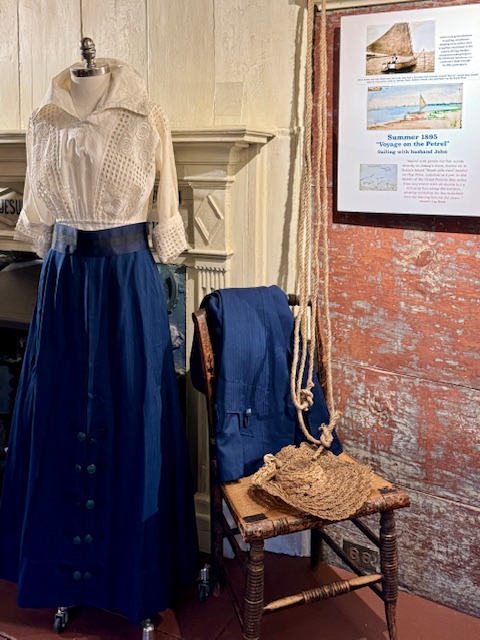
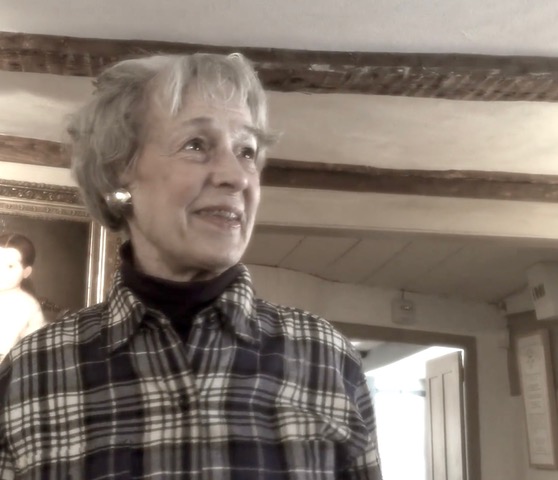
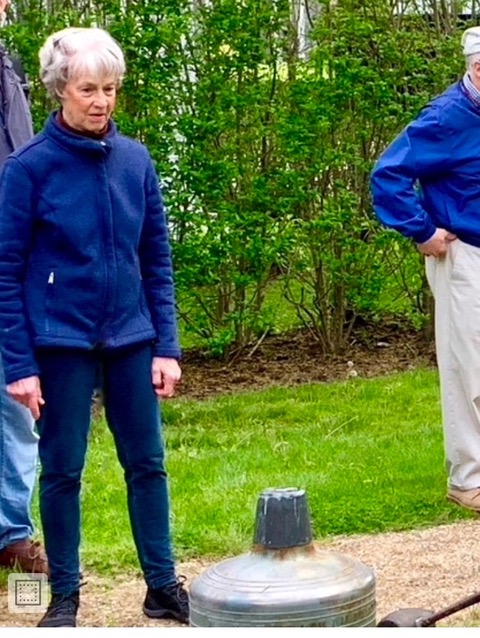
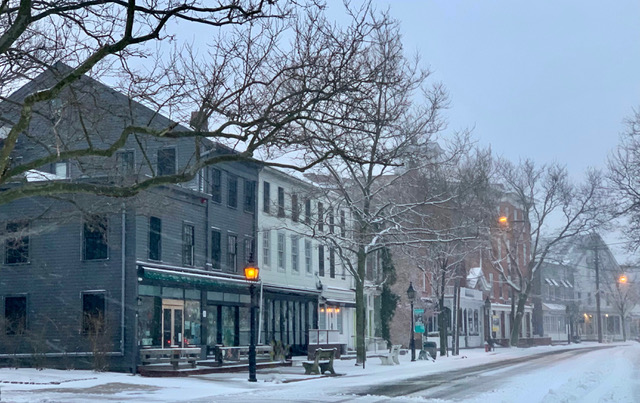
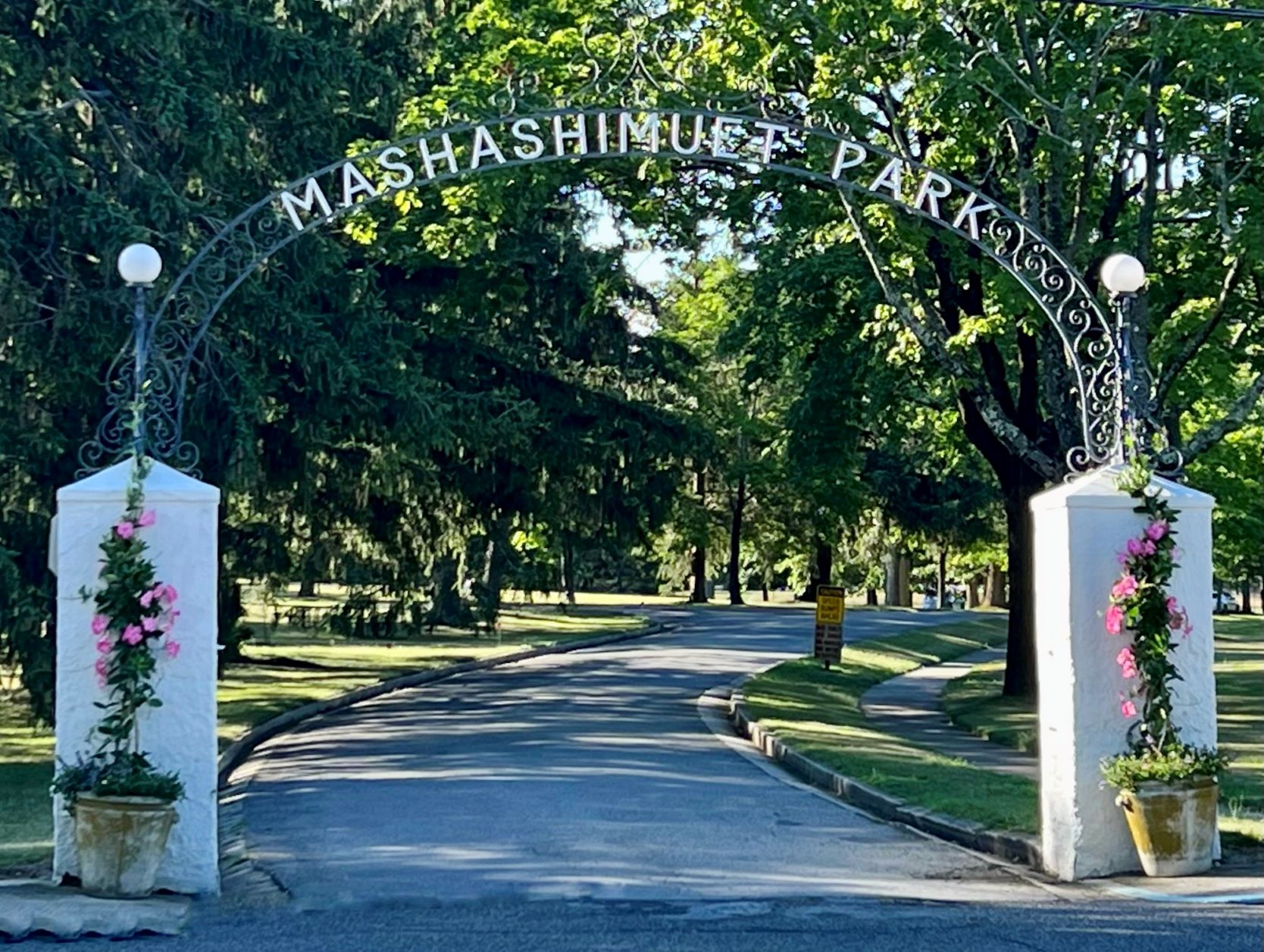
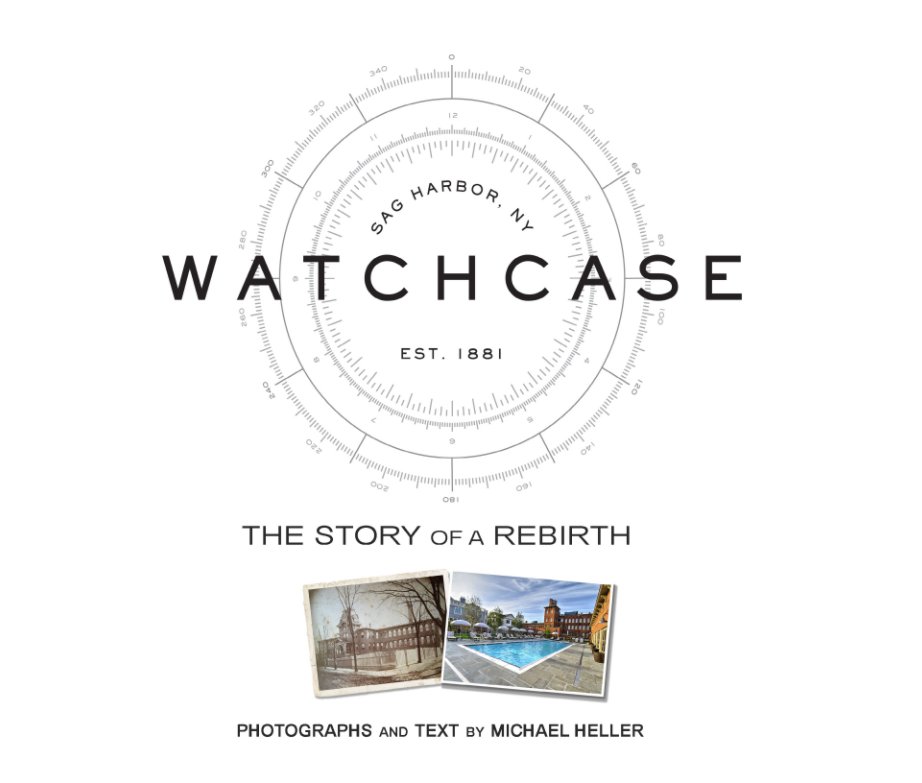



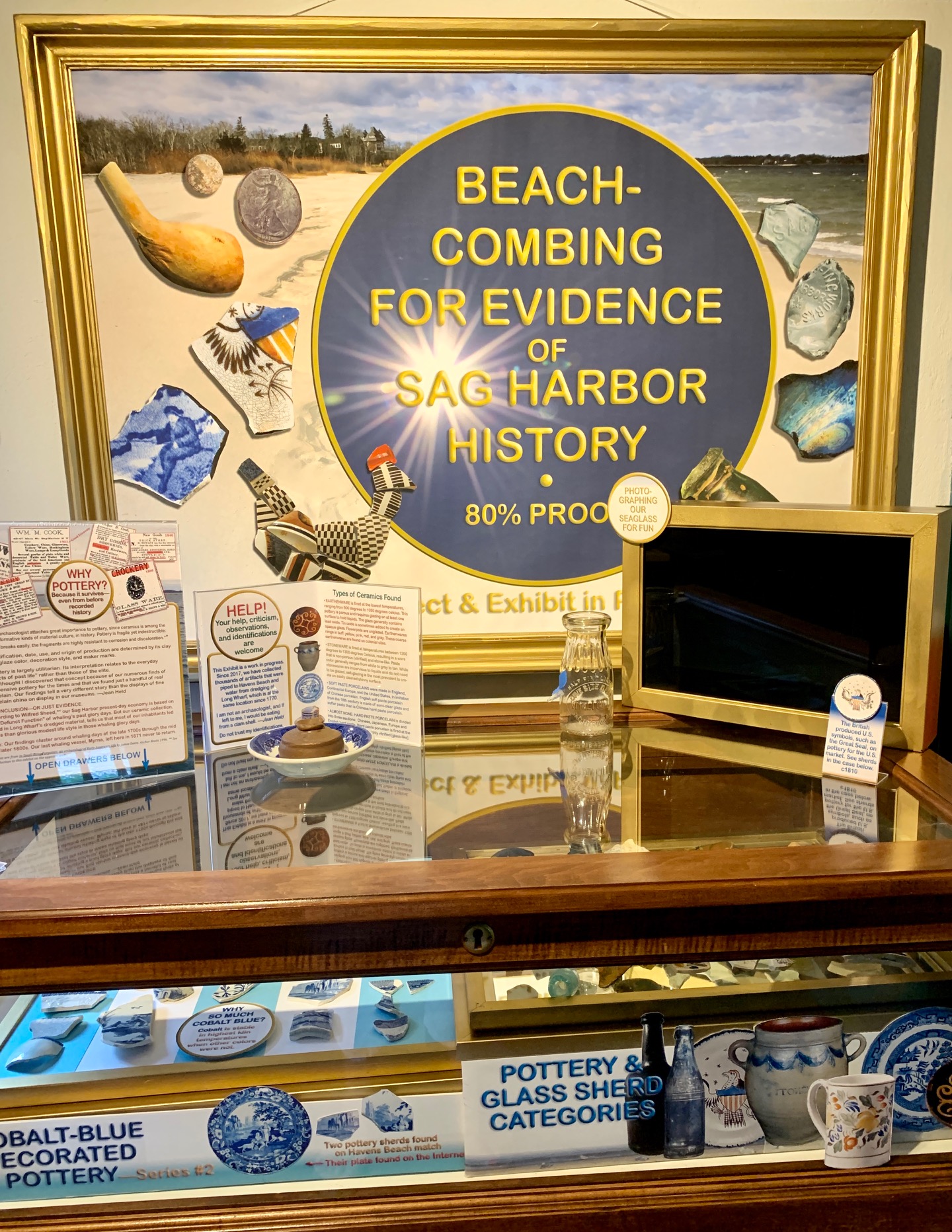



.jpeg)

